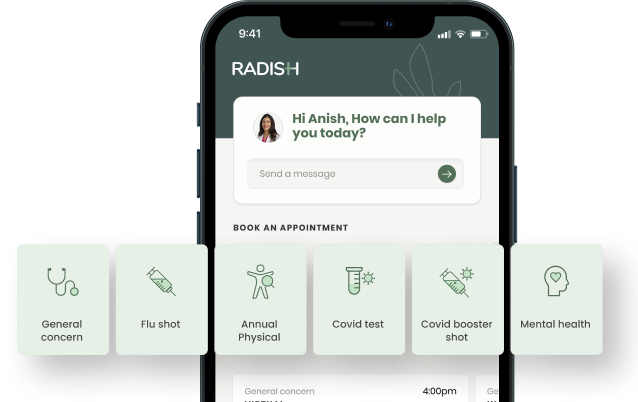Radically Different, Yet Fundamentally the Same: Redefining Primary Care

Viral Patel, MD
When it comes to healthcare, the product that consumers say they want vs. the product that consumers actually receive can be drastically different.

Despite the plethora of resources available to them, consumers tend to have a tough time navigating the system or putting the pieces together themselves to achieve the experience that they’re looking for. Unfortunately, it can be very confusing and intimidating. The good news is that the solution most are looking for is not only accessible, it’s one of the historical backbones of our healthcare system. Primary care, by definition, is not just the experience that consumers are looking for, it’s also the most basic way to control our problem of rising healthcare costs. Sometimes creating change means creating radically new solutions to a problem. But when it comes to primary care, radical change needs to occur with engagement, not the fundamentals. Through both policy changes and advancements in care delivery models, brokers and employers have a unique opportunity to help ensure consumers get what they want and need while also improving outcomes. In order to prove our point, let’s take a closer look.
Definition of Primary Care
According to the American Academy of Primary Care Physicians, primary care includes:
- The provision of integrated, accessible healthcare services
- Delivered by physicians and their teams
- Addresses a large majority of personal healthcare needs
- Develops a sustained partnership with patients
- Person-centered, team-based, and designed to achieve better health and lower costs
- Includes health promotion, disease prevention and health maintenance
- Focuses on patient education and counseling
- Is collaborative with various health professionals
- Provides patient advocacy and promotes effective communication with patients
Now that we’ve formally defined the key elements of primary care, we should take a look at what consumers say they want out of their care. The 2022 Healthcare Insights Study from CVS told us that consumers want the following from healthcare:
- Meaningful and engaging relationships with their providers
- All-encompassing healthcare: connecting physical to social, emotional, and mental health
- Increased engagement and communication
- Coordination among healthcare providers
- Convenient, accessible, and affordable
- Open-ended, flexible, and unique – holistic
Primary care, by definition, is precisely what consumers are looking for. But recent studies have shown that large portions of the population face barriers to accessing quality primary care. Even among those who do have a primary care provider, 50% don’t see their PCP on a regular basis. So what gives?
The challenge for consumers is not that their desired type of care doesn’t exist. It’s that it isn’t easy enough to access. As the primary provider of health insurance to the majority of Americans, employers stand to benefit from helping to solve the access problem for their employees. After all, it’s not only what employees want – an effective primary care strategy can generate massive savings, too. So what are some strategies for employers to make accessing primary care easier for their employees?
Get Virtual
The Telehealth Expansion Act of 2023 extends and expands on the telehealth flexibilities for employers and health plans that were originally made available during the COVID-19 pandemic. Specifically, the Act makes it easier and less costly for consumers to access and start the cycle of primary care in a virtual setting. By offering a virtual solution for primary care – not just urgent care – employers can improve access, reduce absenteeism (leaving work to see a doctor), and increase overall engagement with primary care. Radish Health is a virtual solution that provides members with their own dedicated primary care doctor who is available 24/7/365 for virtual appointments and even text communication. Since Radish primary care doctors are also skilled in first-contact treatment, they can also account for any urgent care needs that arise.
Direct Contracting
Direct contracting or Direct Primary Care (DPC) is an emerging strategy for many employers looking to control costs through improved access to primary care. DPC changes the traditional fee-for-service payment model to a membership-based approach. Employees receive preferred access to quality primary care providers as a part of their no-cost membership. No out-of-pocket expenses for the employees encourages them to engage with the contracted primary care network as their first choice for care – thereby reducing costs for everyone and improving outcomes. Direct contracting can be both virtual or in-person. At Radish, we offer direct contracting to our employer clients and consistently achieve over 40% utilization in the first 12 months.
Onsite
Lastly, employers with critical mass should consider supplementing virtual care with onsite care models where a provider is made available at the place of work to see employees during working hours. Onsite clinics can be hugely successful at reducing workday disruption by improving convenience. In turn, more employees engage with primary care. Chronic illnesses are better managed because of the ease associated with maintenance tasks like blood draws, labs, vital signs, etc. However, onsite clinics can be costly. A hybrid approach – like Radish Onsite – is a low cost-option to provide employees access to more convenient care in the workplace.
At Radish, we have radically redesigned the healthcare experience for employees and their families. Our digital-first platform and dedicated team of physicians bring together the best of sick care with the most proactive wellcare to deliver an all-in-one solution that reduces the overall cost of your plan while optimizing engagement. And with users rating us an industry-leading 4.9/5.0 stars, we can promise you happier, healthier employees too.
Request a Free Demo
Learn how Radish Health can help you improve employee health and save on healthcare.
Request a Demo